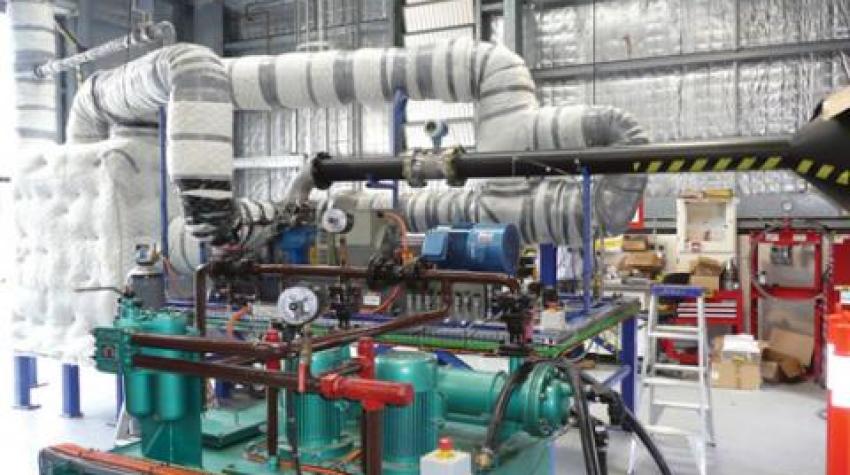December 2015, No. 3 Vol. LII, Sustainable Energy
Climate change is one of the greatest challenges of our time. Equally important, however, is the need to ensure access to energy for quality of life and for economic development. It is therefore critically important to address climate change as part of the sustainable development agenda. Ongoing progress in the development of new technologies has brought confidence and hope that these objectives will be met in the energy system. Dramatic price reductions and technological advancement of wind generators and solar photovoltaics have shown that these renewable energy resources can be important players in global electricity systems, and that the long-anticipated breakthrough in cost-effective storage technology would shift primary energy mixes substantially.
These developments have led invariably to an assumption that we are “done” with fossil fuels across the energy system, that there is no need for further development of new resources, and that we have to stop using them as soon as possible. This assumption has also led to a perception of “good” renewables-based technologies in global energy systems today, on the one hand, and “bad” fossil fuels-based technologies, on the other. The reality is that this debate is much more nuanced and requires more thorough investigation. Carbon capture and storage (CCS) technology and managing methane emissions throughout the fossil energy value chain can help meet ambitious CO2 emission reduction targets, while fossil fuels remain part of the energy system. This will thereby allow fossil fuels to become "part of the solution", rather than remain "part of the problem". All technologies have a role to play in an energy system guided by rational economics.
Fossil fuels comprise 80 per cent of current global primary energy demand, and the energy system is the source of approximately two thirds of global CO2 emissions. Inasmuch as methane and other short-lived climate pollutant (SLCP) emissions are believed to be severely underestimated, it is likely that energy production and use are the source of an even greater share of emissions. Further, much of the biomass fuels are currently used around the world in small scale heating and cooking. These are highly inefficient and polluting, especially for indoor air quality in many less-developed countries. Renewable biomass used in this way is a problem for sustainable development.
If current trends continue, in other words, if the current share of fossil fuels is maintained and energy demand nearly doubles by 2050, emissions will greatly surpass the amount of carbon that can be emitted if the global average temperature rise is to be limited to 2oC. That level of emissions would have disastrous climate consequences for the planet. There are a number of emission reduction opportunities for the energy sector, notably reducing the amount of energy consumed and reducing the net carbon intensity of the energy sector by fuel switching and by controlling CO2 emissions.
The need to reduce emission does not preclude the use of fossil fuels, but it does require a significant change in direction; business as usual is not consistent with decreasing emissions in global energy systems. Energy efficiency and renewables are often positioned as the only solutions needed to meet climate goals in the energy system, but they are not enough. Including an expansion of the use of CCS will be essential, and this technology is expected to result in 16 per cent of annual emissions reduction by 2050. This assertion is supported by the Fifth Assessment Synthesis Report of the Intergovernmental Panel on Climate Change, which estimates that limiting energy sector emissions without CCS would increase the cost of climate mitigation by 138 per cent.
Renewables cannot be used uniformly across the energy system to replace the use of fossil fuels today, mostly because of the variance in the ability of different energy subsectors to switch from fossil fuels to renewables. For example, in some industrial applications such as cement and steel production, emissions come from both the energy use and the production process. Alternative technologies that can replace current production techniques are not yet available at the scale needed, so it is expected that these techniques will persist in the short to medium term. In these cases, CCS can provide a solution consistent with current demands and give the time needed to develop future alternative approaches.
Scenarios that foresee the use of CCS are in all cases associated with a significant transformation of the energy system in response to climate change. Hence, such scenarios are not “business-as-usual”, and show a significant decrease in total global fossil fuels consumption, as well as a significant increase in efficiency across electricity production and industrial processes. This transformation of the energy system is supportive of all technologies that are instrumental for the development of a sustainable energy system.
In this vein, the United Nations Economic Commission for Europe (UNECE) member States endorsed a set of recommendations on CCS in November 2014 following extensive consultations with experts from around the world. The recommendations emphasize that an international climate agreement should:
• Accept a broad array of fiscal instruments to encourage CCS.
• Address capturing and storing carbon dioxide from all industrial sectors, including cement, steel, chemicals, refining and power production.
• Ensure that Governments work together to sponsor and support multiple demonstration projects at scale.
• Allow carbon dioxide injected into reservoirs for enhanced hydrocarbon recovery to be treated and calculated as storage if stored permanently.
These recommendations, if implemented, allow United Nations Member States that still depend heavily on fossil fuels to engage in global efforts to reduce the consequences of climate change, instead of being seen as only contributing to the problem. The technology has been proven at scale in Canada, Norway and the United States of America, and there are some 40 projects at various stages of development around the world today. Near-term efforts on CCS are essential to improve efficiency, reduce costs and better map storage options in order to ensure that this technology is available for large-scale deployment starting in 2025.
CO2 emissions are not the only issue that needs to be addressed in the use of fossil fuels. The fossil fuel value chain, across natural gas, coal and oil production and use, is estimated to emit 110 million tons of methane annually. This represents a large share of all methane emissions. As a powerful greenhouse gas, methane emissions must be significantly reduced.
Methane is a primary component of natural gas, with some emitted to the atmosphere during natural gas production, processing, storage, transmission and distribution. It is estimated that around 8 per cent of total worldwide natural gas production is lost annually to venting, leakage and flaring, resulting in substantial economic and environmental costs. During the geological process of coal formation, pockets of methane get trapped around and within the rock. Coal mining-related activities (extraction, crushing, distribution, etc.) release some of the trapped methane. As with coal, the geological formation of oil can also create large methane deposits that are released during drilling and extraction. The production, refinement, transportation and storage of oil are also sources of methane emissions, as is incomplete combustion of fossil fuels. No combustion process is perfectly efficient, so when fossil fuels are used to generate electricity, heat or power vehicles, they all contribute as sources of methane emissions.
The key challenges for methane management are to monitor and record emissions accurately using the best monitoring and measurement technology and then to apply the best fixes to minimize leaks and emissions. This will offer economic benefits, while decreasing health impacts, increasing safety and reducing global warming. The multiple benefits of managing methane emissions are compelling, but still more work is needed to demonstrate adequate progress in this space.
Addressing the issue of sustainable energy requires the engagement of the broadest possible group of stakeholders, while ignoring the role of fossil fuels will have a negative effect. Many developing countries have large untapped fossil fuel resources that they intend to use to develop their respective economies. Insisting that they incur significant costs and forego the use of these resources in favour of renewables is likely to create unneeded tensions. The argument is made that the developed world built its existing economies on fossil fuels and still heavily relies on them. Rather than a “non-fossil” only agenda, a more pragmatic approach that encourages all to use the broad range of resources available to them (i.e. energy efficiency, renewables and fossil fuels in a sustainable manner) will create a more balanced approach.
The other stakeholder group that is often vilified is the private sector, especially actors in the fossil fuel industry. In fact, the private sector holds the expertise and often the financial resources to support the needed change to the inclusive green economy that the world is seeking. Using the balance sheets of the big players along with their knowledge and know-how can facilitate the transition; treating them like pariahs will make the journey harder and more expensive.
The persistent critical challenge is to ensure an improved quality of life and economic growth, while reducing the environmental footprint of the energy sector. The transition to a sustainable energy system is an opportunity to improve energy efficiency from source to use, minimize environmental impacts, reduce energy and carbon intensities, and correct energy market failures. Seizing the opportunity will require coordinated policy review and reform across many sectors. The UNECE region has the potential for competitive economic advantage compared to other regions of the world, given the relatively modest distances between energy supply sources and energy demand centres. Full integration of the region’s energy markets within an efficient framework would significantly improve the technical, social, economic and environmental contribution that energy could make.
Building a sustainable energy system for the future in the UNECE region will involve a substantial transition from what is in place today. Improving efficiency relates not only to consumer-level energy issues (such as energy-efficient housing, vehicles and appliances), but also to upstream energy efficiency in production/generation, transmission and distribution. It is an opportunity to accelerate the change from the traditional model of selling energy commodities to one of providing energy services based on innovation.
The development of smart energy networks with common rules of operation provides an important opportunity to enhance the collaboration among technologies, thereby enhancing the cost-effective penetration of the broadest range of low-carbon technologies and improving the resilience of the energy system. Fossil fuels will be part of the global energy system for decades to come—whether we like it or not. It will continue to underpin social and economic development around the world. From that perspective, it is essential that we have an open and transparent discussion on the role of fossil fuels in sustainable energy systems globally in the creation of practical climate strategies. It is especially important to engage emerging economies and developing countries in the context of the twenty-first session of the Conference of the Parties (COP21) to the United Nations Framework Convention on Climate Change. This could change the political dynamics and help to shape a strong climate agreement in Paris.
The UN Chronicle is not an official record. It is privileged to host senior United Nations officials as well as distinguished contributors from outside the United Nations system whose views are not necessarily those of the United Nations. Similarly, the boundaries and names shown, and the designations used, in maps or articles do not necessarily imply endorsement or acceptance by the United Nations.




